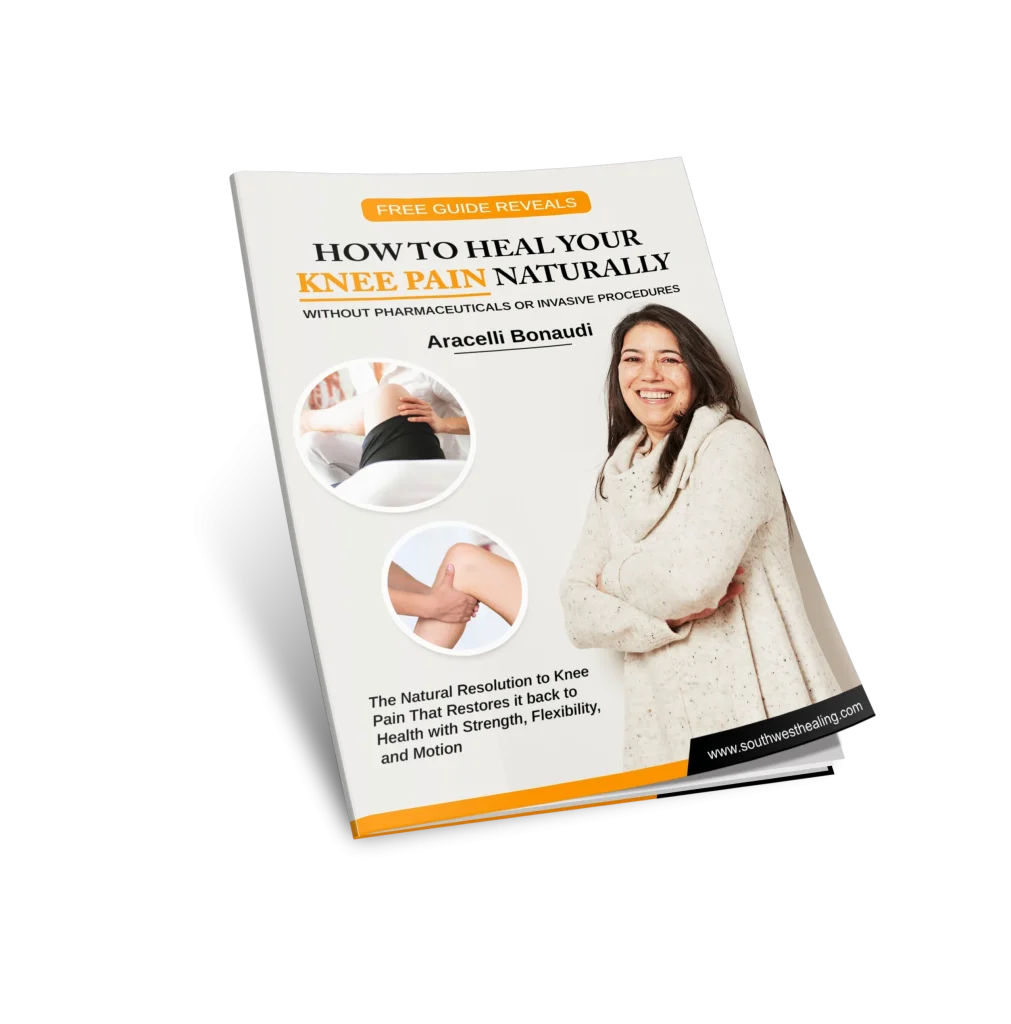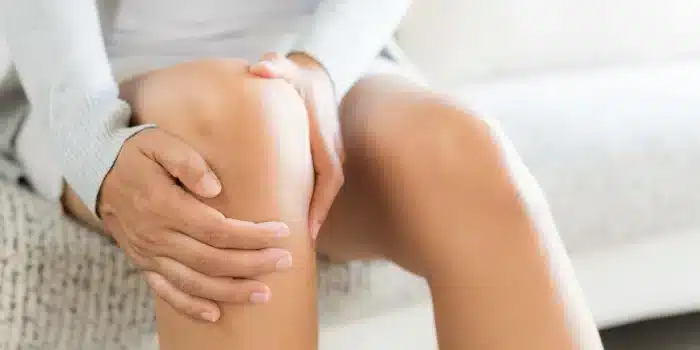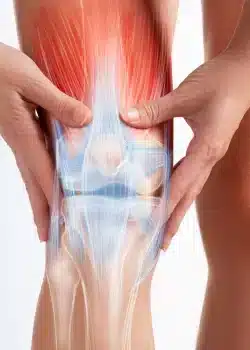Get Your Free Knee Pain Report!

If you’ve got a nagging pain in your knee, stiffness when you stand up, or an ache when you walk – it’s very tempting to think it’s nothing and will sort itself out. Or, you might blame it on “overdoing it in the garden,” or tell yourself it’s just a “minor strain” or the kind of problem that “everyone” gets as they get older…
If you’ve been suffering from knee pain, we know how debilitating it can be. You might have a sharp pain that makes it difficult to extend or bend your knee, or a dull ache that gradually worsens, making activities like long walks less appealing. Another common symptom is instability, where the knee feels as though it might “give out” or buckle under your weight. You might also hear or feel a popping or grinding sensation during movement, which can be a sign of damage to the cartilage or ligaments within the knee. In some cases, the pain may worsen after periods of rest or inactivity, or it may flare up during physical activities like running, squatting or jumping.
If you’re not quite ready to book an appointment yet and have some questions you would like answered first, click the link below to complete a form to get the conversation started.


When your knee hurts, you might start to wonder: Is my back hurting, too? Then maybe you start getting headaches. But here’s the thing: most of the time, the pain you’re feeling in your knee might not be due to an issue in the knee – your knee is likely fine. If you go to a doctor and they perform an MRI, they might tell you there is nothing wrong with your knee but that doesn’t explain why you can’t walk or run without pain.
The truth is, it’s not just about your knee, it’s your entire body tightening up. Over time, our bodies get tighter, and the fascia – the connective tissue – dehydrates. This will pull on your body which can cause your hips to become misaligned. If your hips are misaligned, your knees will suffer. Even if you get a knee replacement, it won’t solve the problem because the root cause hasn’t been addressed. This will only fix the symptoms, not the underlying cause.
The real problem might have originated somewhere else – like in your hips or abdomen. What we do at Southwest Myofascial Release is relax your body and rehydrate the fascia. Often, the pain in your knee may not stem directly from the knee joint itself but from the tension in the surrounding muscles, such as the quadriceps, hamstrings, or even the hips. Tightness in these areas can pull on the knee, creating misalignment and increased strain.
Additionally, myofascial release promotes better circulation and lymphatic drainage in the treated areas, which can help reduce inflammation around the knee. This is particularly important for those suffering from chronic pain conditions or joint stiffness, as improved blood flow aids in healing and decreases swelling. Once that happens, you will find your pain retreats very quickly because your body will no longer feel out of alignment. We have successfully treated hundreds of people with knee pain using this method. While we work on the knee itself, we also focus on other areas of the body, releasing tension and helping release emotions stored in the tissues, which often contribute to the problem.
Are you unsure if physical therapy is right for you? Would you prefer to talk with a Physio before making a decision? All you have to do is click the link below to fill out a simple form.
If you’re not quite ready to book an appointment yet and have some questions you would like answered first, click the link below to complete a form to get the conversation started.
